How Do Braces Work?
Dental braces are more than just a treatment; they pave the way to a healthy, confident smile.
Recommended by orthodontic specialists, braces can correct various issues, from crooked and crowded teeth to jaw alignment and bite problems. The advantages go beyond aesthetics, including enhancing oral hygiene, improving speech, and making eating more comfortable.
Modern technology has improved braces, offering better comfort, aesthetic appeal, and shorter treatment durations. However, at their core, the features that make braces such an effective orthodontic treatment remain the same. Successful treatment with braces requires pressure, time, and cooperation. Experienced orthodontists can combine all of these factors to create the perfect treatment plan for each patient, tailored to their needs.
In this guide, the expert orthodontists of AAO explain how braces work, the different types of braces available, and when you should consider getting braces.

How Do Braces Work?
Traditional braces straighten teeth using a combination of brackets and wires affixed to your teeth. These put pressure on your teeth to gradually move them to more desirable positions over time. Your orthodontist may add elastic bands for additional force to assist in moving the teeth and correcting your bite. Tooth-colored ceramic brackets and advanced self-ligating brackets provide alternative options with unique benefits. You may also be required to wear additional appliances, such as headgear or palatal expanders, based on your specific needs.
How to Tell You Need Braces
The first step towards a healthier, more attractive smile is recognizing the need for orthodontic care. You may consider an orthodontic consultation if you experience any of the following:
- Visibly crooked or crowded teeth
- Difficulty in flossing and brushing effectively
- Frequent biting of the tongue or inside of the cheek
- Jaw discomfort or a clicking sound when chewing or upon waking
- Irregular loss of baby teeth in childhood
- Delayed or late eruption of adult teeth
- Problems in chewing food efficiently
- The presence of an underbite or overbite
- Missing or supernumerary (extra) teeth


The Benefits of Early Orthodontic Treatment
Early orthodontic assessment can be a proactive step toward ensuring long-term oral health for your child. The American Association of Orthodontists (AAO) recommends that children have their first orthodontic evaluation around age 7. This early evaluation and possible intervention can be beneficial for several reasons.
At around 7, most children have a mix of baby and permanent teeth. An orthodontist can assess how the permanent teeth are coming in and identify potential issues, including improper jaw relationships (such as a crossbite), excessive crowding, or impacted teeth which might require intervention. Seeing an orthodontist at this age can help avoid more complicated and lengthy treatments in the future.
Orthodontists can use interceptive treatments that work well on younger patients, such as palatal expanders or partial braces. These devices can effectively correct issues while the child’s jaw grows, making future treatment easier and possibly reducing the time needed to wear full braces.
How Long Do Braces Take?
Before you begin your orthodontic journey, preparing your mouth for treatment is essential. We advise visiting your family dentist for a comprehensive dental cleaning, plaque removal, and cavity treatment. In many cases, orthodontic treatment cannot start until certain dental conditions (like cavities) are treated. Starting with a healthy oral environment optimizes treatment effectiveness, comfort, and efficiency.
Knowing the approximate duration of your treatment can help you plan better. The length of treatment is different for everyone. It could take a few months if you only need slight corrections. However, if you have complex issues that require moving many teeth and repositioning the jaw, it could take years. Here’s a general idea of what you can expect with braces from your first consultation to post-treatment:
- Consultation and Diagnosis: 1-2 visits
- Brace Fitting/Placement: 1 visit
- Regular Adjustments: Every 4-12 weeks, depending on where you are in your treatment.
- Treatment Duration: Varies between individuals but generally ranges from 12 to 24 months
- Retention Phase: Wearing an orthodontic retainer for a certain period post-treatment
Remember, each treatment plan is unique, and timelines can vary based on individual needs and complexities.


How Much Do Braces Cost?
While the benefits of braces are priceless, we understand that the financial aspect is an important consideration. The cost of braces can vary depending on the type, complexity, and duration of treatment.
Getting braces can be expensive, but there are many ways to save and pay for treatment. Here are just a few things to keep in mind when considering how to afford braces:
- Many orthodontists can provide different ways to pay for treatment, like minimal to zero percent interest in-house financing with monthly payment plans, allowing you to spread the cost of braces out over time, making them more affordable.
- Ask about discounts. Some orthodontists offer discounts for paying in full or for multiple family members.
- Many dental insurance plans include some orthodontic coverage for children under 18, although coverage is less common for adults. However, it’s important to contact your insurance provider and inquire about the specifics of your insurance coverage.
- If you qualify for Medicaid, braces may be covered if considered medically necessary. Since each state’s Medicaid program is unique, verifying what orthodontic services are covered in your area is essential.
- If you have a Health Savings Account (HSA), Flexible Spending Account (FSA), Health Reimbursement Arrangement (HRA), or Medical Savings Account (MSA), you can use these pre-tax dollars to pay for braces.
- Many dental charities, like AAOF Gifted Smiles, help people afford dental care, including braces.
Types of Braces
Traditional Metal Braces
Traditional metal braces are known for their efficacy and affordability. Metal brackets are affixed to the teeth, and wires thread through them to guide teeth into their correct positions. The wire is usually made of metal alloys optimized for comfort while providing sufficient force to align the teeth.
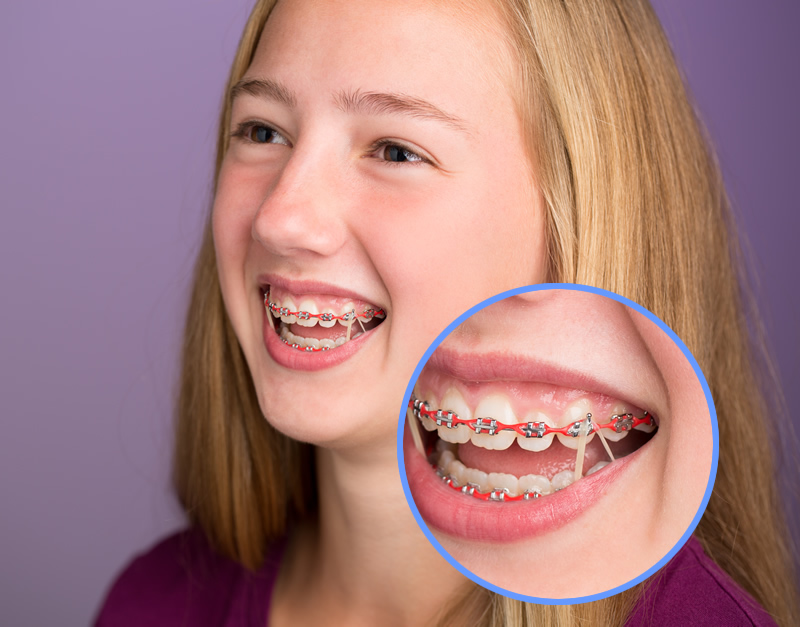
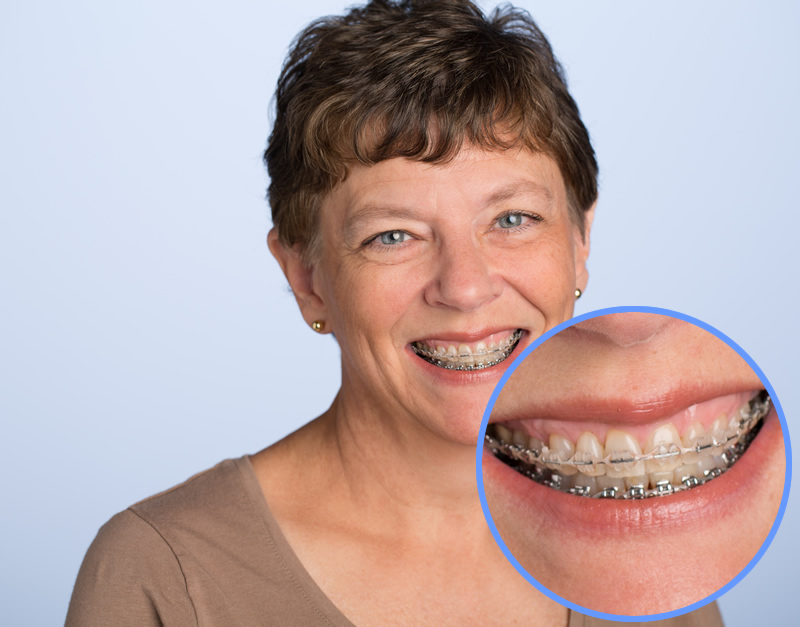
Ceramic Braces
Ceramic options provide a near-seamless look, blending with your teeth using tooth-colored or clear brackets or wires. These brackets are made from either ceramic or porcelain. Patients typically choose this option when they want less noticeable braces than traditional metal braces. Like other types of braces, they tend to move teeth faster than clear aligners. In some cases, ceramic braces may not be available as a treatment option to some patients. Talk to your orthodontist to find out if ceramic braces are a good fit for you.
Self-Ligating Braces
A modern twist similar to traditional braces, self-ligating braces feature brackets with built-in clips or doors to hold the wire. These brackets minimize friction and generally allow for a longer time between appointments. Self-ligating brackets can be made from metal, such as stainless steel or ceramic, which is often more discreet.
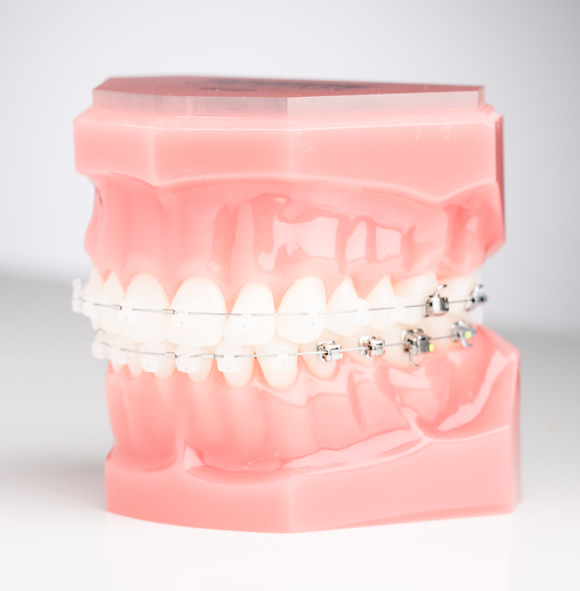
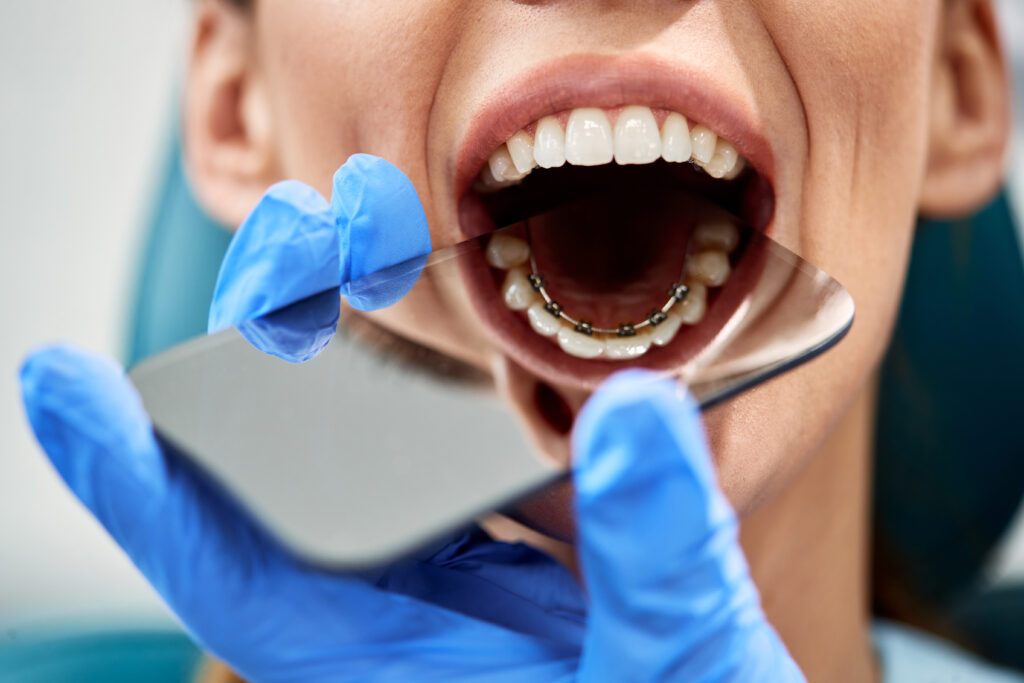
Lingual Braces
For those prioritizing aesthetics, lingual braces are mounted on the back sides of the teeth, making them virtually invisible. Despite their discreet placement, lingual braces effectively correct many orthodontic issues.
Designer Braces
Children can make their orthodontic journey fun with designer braces that feature brackets in various shapes like stars, hearts, and even sports-themed designs. These braces are equally effective and safe as their conventional counterparts.
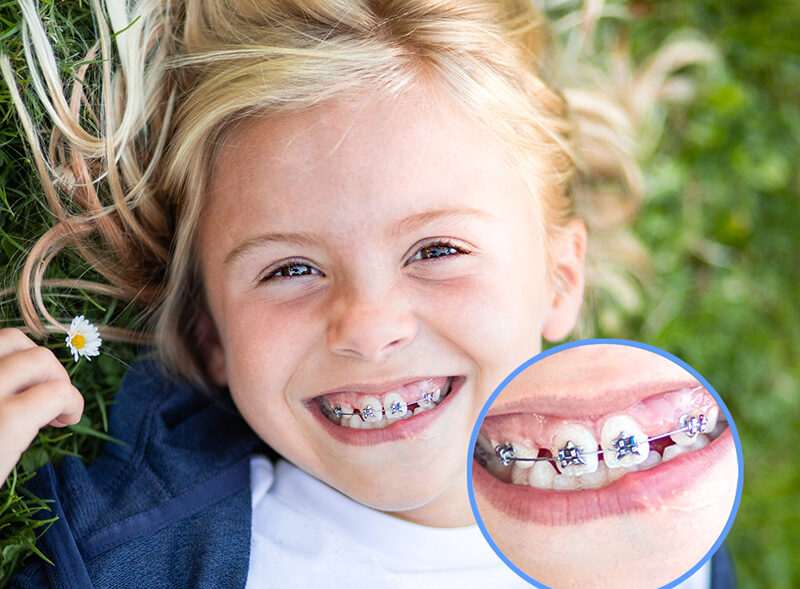
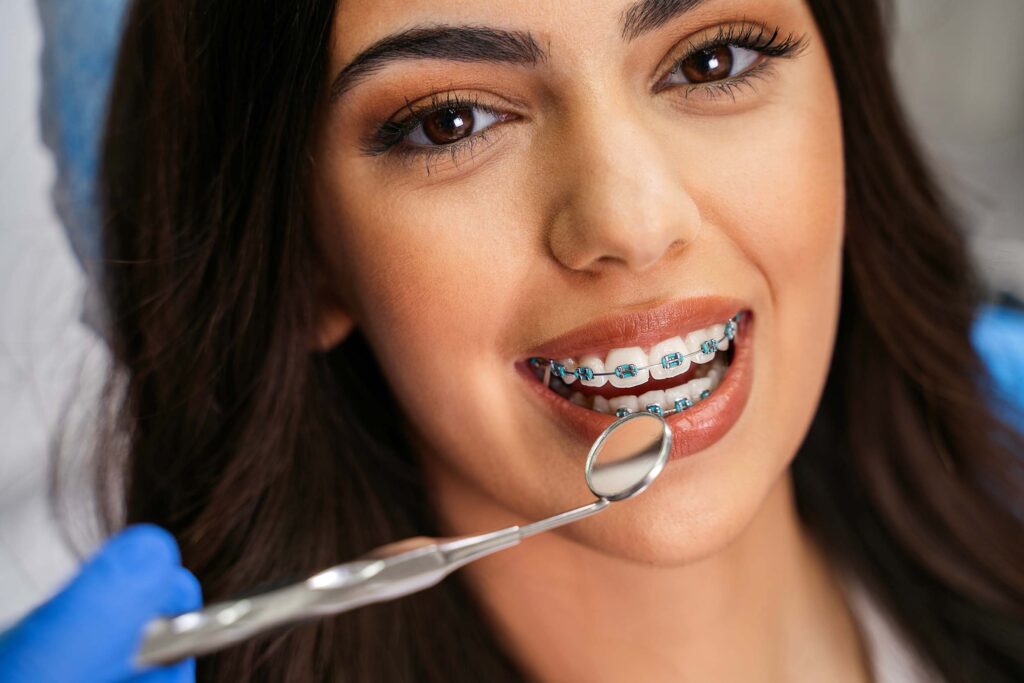
Custom Fit Braces
These braces are customized, designed, and crafted specifically for your individual dental anatomy and treatment plan.
Braces vs. Other Treatments
Braces and clear aligners are the two most common treatments to adjust crooked teeth. Both have their benefits and drawbacks and treat different ranges of orthodontic problems.
Braces are attached to the teeth for the duration of the treatment, can treat a wide range of malocclusions (including very bad bites or crooked teeth), and tend to work faster than other treatments. However, they are much more visible and cannot be removed during the treatment process.
Clear aligners are very difficult to see and can be removed daily to eat, brush teeth, and for occasional social events and interactions. However, they don’t work as quickly, can be easily lost since they’re removable, and treat a much narrower set of orthodontic cases. Typically, they can treat light to moderate alignment issues.
Which treatment is right for you typically depends on the complexity of the malocclusion (misaligned bite) that needs to be corrected. Speak with your AAO orthodontist about which treatment types fit your needs.
Maintenance Tips: Keeping Your Braces in Top Shape
Braces are an investment in oral health; proper care ensures you get the most out of your treatment. Here are some maintenance tips:
- Daily Cleaning: Use a soft-bristled toothbrush and fluoride toothpaste. A water flosser, proxy brushes, and many other products can help clean hard-to-reach areas.
- Foods to Avoid: Hard and sticky foods can damage your braces. Choose softer foods and cut fruits and vegetables into smaller pieces.
- Emergencies: Contact your orthodontist immediately for guidance for a broken wire or bracket. Keep orthodontic wax handy to cover any sharp edges temporarily.
- Regular Check-ups: Never skip your scheduled appointments for adjustments and cleaning.

Frequently Asked Questions
Take the First Step Towards a Beautiful Smile Today!
If you’re contemplating braces for yourself or your child, there’s no better time to act.
A perfect smile is a long-term investment in your health, appearance, and well-being. By choosing an AAO-accredited orthodontist, you’re ensuring the highest level of professional care.
The American Association of Orthodontists (AAO) represents 19,000+ orthodontists throughout the United States, Canada, and abroad. These orthodontic specialists are dedicated to guiding you through this transformative journey.
Don’t leave your smile to chance. Trust the experts.
